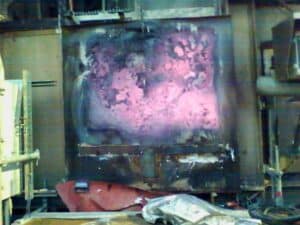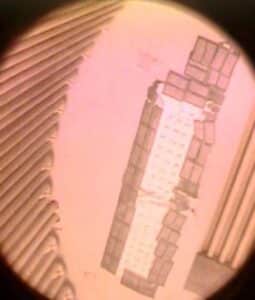Newsroom - Mar 9, 2023
Hot Spots on the Shell: Frequently Asked Questions
During our recent webinar (if you missed it live, you can still watch it here on demand), Johnny Smatana reviewed a case study (read it here) where we repaired internal refractory on a live SMR. With more than 200 attendees, questions were raised about the process and limitations of repairing hot spots on live fired heaters and furnaces.
Hot Spot Repair Frequently Asked Questions (FAQs)
Answers provided by Larry – an IGS SME
Q: Is there any disturbance in draft pressure observed after creating an opening?
No disturbance.
Q: Will the skin need to be replaced at the next available outage?
In cases this severe a full replacement at the next TA would be expected. In some cases our repair is in place for many years.
Q: What is the refractory lifespan when you do this? Being done online will it result in a more rapid curing and how does that affect the longevity of the repair?
In some cases our repair is in place for many years. The pumpable refractory can handle the rapid curing.
Q: If the castable being pumped is water-based, is there any concern with the rapid expansion of air pockets?
We do not see failures from the refractory curing. Ensuring we use the proper metallurgy of the baskets holding the refractory is critical.
Q: You mentioned the baskets were CF lined, but what were the baskets made of? The metallic part of the basket is exposed directly to the radiant section of the furnace, correct? Will you lose anchoring for the repair long-term due to this exposure?
The baskets are made from a high temperature stainless steel and additional more conventional anchors are included with the repair.
Q: Are these repairs mainly for large damaged refractory areas or can they be used for small hot spots?
There is no limit – small, or large.
Q: What options do we have when the areas have poor / limited access?
An experienced Hot-tek specialist will visit the site to determine the optimal method for completing an online repair.
Q: Can this be used for roof refractory repairs?
Absolutely.
Q: Can this be achieved on an IFB area?
All types of refractory.
Q: How do we address refractory repairs that might be around tunnel wall bricks?
An experienced Hot-tek specialist will visit the site to determine the optimal method for completing an online repair.
Q: What is the largest size spot that you can repair?
Essentially unlimited. 1/3 of a roof in one recent scope.
Q: What about in the convection area around tubes with limited room to insert a basket?
Normally not an issue. An experienced Hot-tek specialist will visit the site to determine the optimal method for completing an online repair.
Q: What hot spot temperature is necessary to perform an online repair? When do we see the carbon steel casing actually begin to deteriorate?
This is case specific – client maintenance personnel will determine the severity/requirement to take action – often by directing steam to the overheated area of shell.
Q: What about areas that may be behind a header pipe or have some structural steel in the way. Have any issues with this? Assuming you need clear access?
Access is key and we can work in tight spaces around structural steel.
Q: Can this technology be used in the reactors and regenerators of FCC units, and does it restrict the reliability of the equipment?
An experienced Hot-tek specialist will visit the site to determine the optimal method for completing an online repair.
Q: What does a typical work party consist of for a 1m2 repair?
This is site specific.
Q: Can you repair close-wall tubular superheater hole throughs? It’s a steam superheater with the tubes being about 6″ from the wall.
Normally not an issue. An experienced Hot-tek specialist will visit the site to determine the optimal method for completing an online repair.
Q: What about in the convection area around tubes with limited room to insert a basket? about 6″ clearance.
Normally not an issue. An experienced Hot-tek specialist will visit the site to determine the optimal method for completing an online repair.
Q: I understand that the refractory is injected or pumped; how do you ensure that the repaired area is uniform both in depth and in the limits, and how do you avoid the formation of spaces due to accelerated drying by exposure to high temperature?
The thickness of the repair is controlled by the positioning of the support frame. The ceramic fiber lining of the frame prevents premature drying – no voids are formed. Final inspection using IR thermography confirms repair quality.
Several people also asked for case studies in their region. You can find all Hot-tek case studies here. And, finally, we also had requests to share videos of the repair and other solutions that can be applied while the fired heater is live – see this Youtube playlist for 3D simulations.



